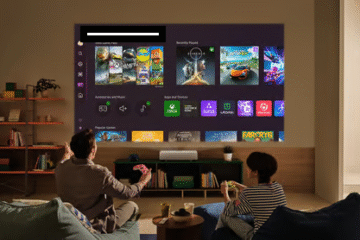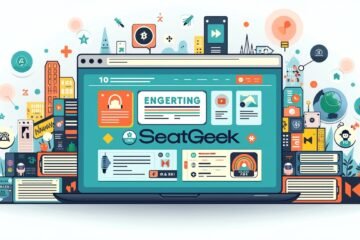As the animation industry continues to expand in 2025, choosing the right software for your workflow can make a significant difference in your production quality, speed, and creative flexibility. Whether you’re an aspiring animator, studio professional, or business owner exploring video and animation services, you’ve likely come across two of the most popular tools: Toon Boom Harmony and Adobe Animate.
Both are powerhouse platforms used in 2D animation—but they serve slightly different purposes and audiences. In this post, we’ll compare Toon Boom Harmony vs Adobe Animate based on performance, features, usability, pricing, and suitability for various animation tasks, including animatics and full-scale productions.
Understanding the Basics
What Is Toon Boom Harmony?
Toon Boom Harmony is a professional-grade 2D animation software used by top studios like Cartoon Network, Nickelodeon, and Netflix. It supports traditional frame-by-frame animation, rig-based puppet animation, and hybrid workflows. Known for its advanced toolset, Harmony is built for complex, high-quality productions such as TV series, feature films, and commercials.
What Is Adobe Animate?
Formerly known as Flash Professional, Adobe Animate is a versatile software used for 2D animation, interactive content, and web animations. It’s more user-friendly for beginners and ideal for creating short-form content like YouTube animations, banner ads, or mobile app animations. Adobe Animate integrates seamlessly with other Adobe Creative Cloud tools, making it a favorite among multimedia designers.
1. Interface and Ease of Use
When comparing Toon Boom Harmony vs Adobe Animate, the first noticeable difference is the user interface.
-
Adobe Animate features a relatively simple interface. It’s approachable for beginners and those already familiar with Adobe tools like Photoshop or Illustrator.
-
Toon Boom Harmony, on the other hand, offers a more complex UI, reflecting its advanced capabilities. While it may come with a steeper learning curve, it provides deeper control over rigs, nodes, and compositing.
Verdict:
For beginners and casual users, Adobe Animate offers a smoother learning path. For professionals and studio-level animators, Harmony’s interface is more powerful once mastered.
2. Animation Capabilities and Toolsets
Toon Boom Harmony
-
Vector and bitmap drawing tools
-
Advanced rigging system with deformers
-
Node-based compositing
-
In-depth timeline and frame management
-
Industry-grade tools for animatics, lip-sync, motion blur, and more
Adobe Animate
-
Streamlined vector animation tools
-
Basic rigging with symbol-based animation
-
Great for HTML5 canvas and interactive content
-
Frame-by-frame and tweening options
-
Integration with Adobe Character Animator
Verdict:
If you’re creating complex character animation, animatics, or broadcast-quality cartoons, Toon Boom Harmony is the superior option. For interactive animations or lightweight web content, Adobe Animate holds its ground.
3. Support for Animatics
Animatics are essentially animated storyboards used to visualize timing, pacing, and scene transitions before full animation begins.
-
Toon Boom Harmony excels in this area with built-in tools for creating animatics, integrating audio, camera movements, and scene planning. Many studios use Harmony for both storyboarding and full production pipelines.
-
Adobe Animate can also be used for animatics, but it lacks dedicated features. Animators often have to manually assemble timelines and synchronize audio without as much automation or integration.
Verdict:
For professional animatics and pre-production planning, Toon Boom Harmony is the stronger choice.
4. Performance and Stability
Both tools are well-optimized, but their performance depends on the project scale.
-
Toon Boom Harmony handles large, layered scenes with ease. It’s designed to manage high-resolution assets, heavy timelines, and large render outputs.
-
Adobe Animate works well with simpler projects. However, it can slow down or crash during complex sequences or long timelines.
Verdict:
Harmony is more robust for studio work. Animate is efficient for lightweight content.
5. Pricing and Licensing
-
Toon Boom Harmony offers three pricing tiers:
-
Essentials: $25/month – suitable for students and hobbyists.
-
Advanced: $63/month – more features for freelancers.
-
Premium: $115/month – for studios and professionals.
-
-
Adobe Animate is part of Adobe Creative Cloud:
-
$22.99/month as a standalone app.
-
Included in the full Creative Cloud subscription ($59.99/month).
-
Verdict:
If you’re already using Adobe products, Animate is a more economical and integrated option. Harmony’s pricing is justified by its professional-grade features, but it’s an investment.
6. Integration with Video and Animation Services
When working with third-party video and animation services, your software choice can impact how smoothly collaborations run.
-
Toon Boom Harmony is the industry standard for professional animation studios. If you’re outsourcing animation or working in a team environment, Harmony offers better file sharing, scene management, and production pipelines.
-
Adobe Animate integrates well with video editors like Adobe Premiere Pro and After Effects. It’s excellent for multimedia projects where animation is just one component.
Verdict:
For animation-focused studios and freelancers, Harmony’s professional compatibility is essential. For multimedia marketers or web developers, Adobe Animate offers more flexibility across platforms.
7. Industry Use and Community
-
Toon Boom Harmony is widely used in TV and feature animation. Studios that produce shows like Rick and Morty, The Simpsons, and BoJack Horseman rely on Harmony.
-
Adobe Animate has a strong community among indie creators, YouTubers, and web designers. It’s also used for educational content, simple explainer videos, and mobile games.
Verdict:
If your goal is a studio job or cinematic-level work, learning Harmony is a smart move. For content creators and digital marketers, Animate has a broad support base.
Final Verdict: Which Software Should You Choose in 2025?
When you compare Toon Boom Harmony vs Adobe Animate, the choice comes down to your specific needs:
-
Choose Toon Boom Harmony if:
-
You’re producing TV-quality animations.
-
You need detailed animatics and rigging tools.
-
You’re working with professional video and animation services.
-
You’re planning to work in a studio or production pipeline.
-
-
Choose Adobe Animate if:
-
You’re creating web or social media content.
-
You prefer a user-friendly interface.
-
You’re already using Adobe Creative Cloud.
-
You want to animate for games or mobile applications.
-
No matter which tool you select, mastering it will take your animation projects to new heights in 2025 and beyond. From explainer videos to entertainment, the right software makes all the difference.





